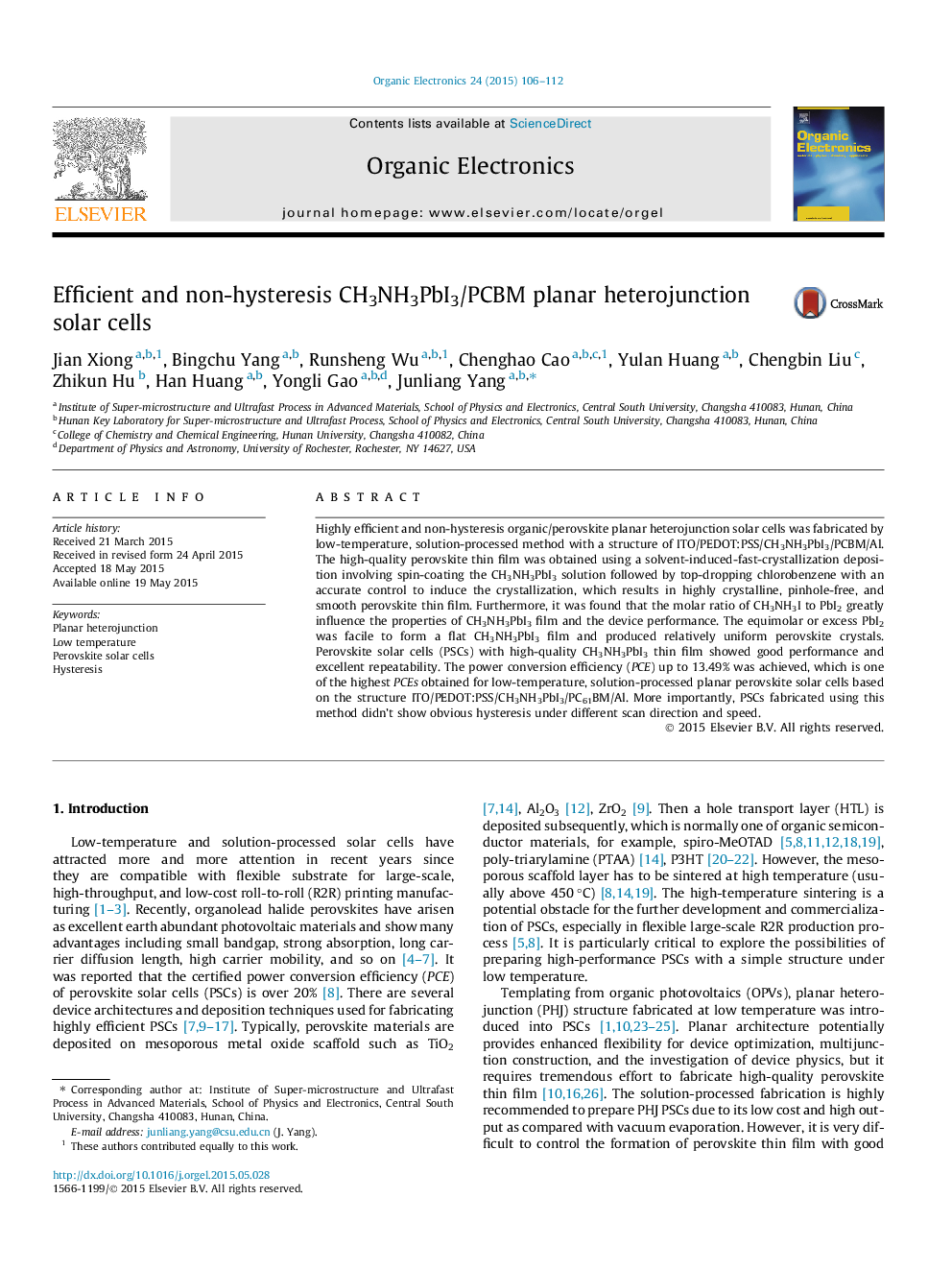| Article ID | Journal | Published Year | Pages | File Type |
|---|---|---|---|---|
| 1263683 | Organic Electronics | 2015 | 7 Pages |
•Efficient and non-hysteresis planar heterojunction perovskite solar cells were fabricated.•High-quality CH3NH3PbI3 perovskite film was obtained by solvent engineering.•The device performance is strongly dependent on the morphology of perovskite film.•The PCE up to 13.49% was achieved for organic/perovskite planar heterojunction solar cells.
Highly efficient and non-hysteresis organic/perovskite planar heterojunction solar cells was fabricated by low-temperature, solution-processed method with a structure of ITO/PEDOT:PSS/CH3NH3PbI3/PCBM/Al. The high-quality perovskite thin film was obtained using a solvent-induced-fast-crystallization deposition involving spin-coating the CH3NH3PbI3 solution followed by top-dropping chlorobenzene with an accurate control to induce the crystallization, which results in highly crystalline, pinhole-free, and smooth perovskite thin film. Furthermore, it was found that the molar ratio of CH3NH3I to PbI2 greatly influence the properties of CH3NH3PbI3 film and the device performance. The equimolar or excess PbI2 was facile to form a flat CH3NH3PbI3 film and produced relatively uniform perovskite crystals. Perovskite solar cells (PSCs) with high-quality CH3NH3PbI3 thin film showed good performance and excellent repeatability. The power conversion efficiency (PCE) up to 13.49% was achieved, which is one of the highest PCEs obtained for low-temperature, solution-processed planar perovskite solar cells based on the structure ITO/PEDOT:PSS/CH3NH3PbI3/PC61BM/Al. More importantly, PSCs fabricated using this method didn’t show obvious hysteresis under different scan direction and speed.
Graphical abstractFigure optionsDownload full-size imageDownload as PowerPoint slide
